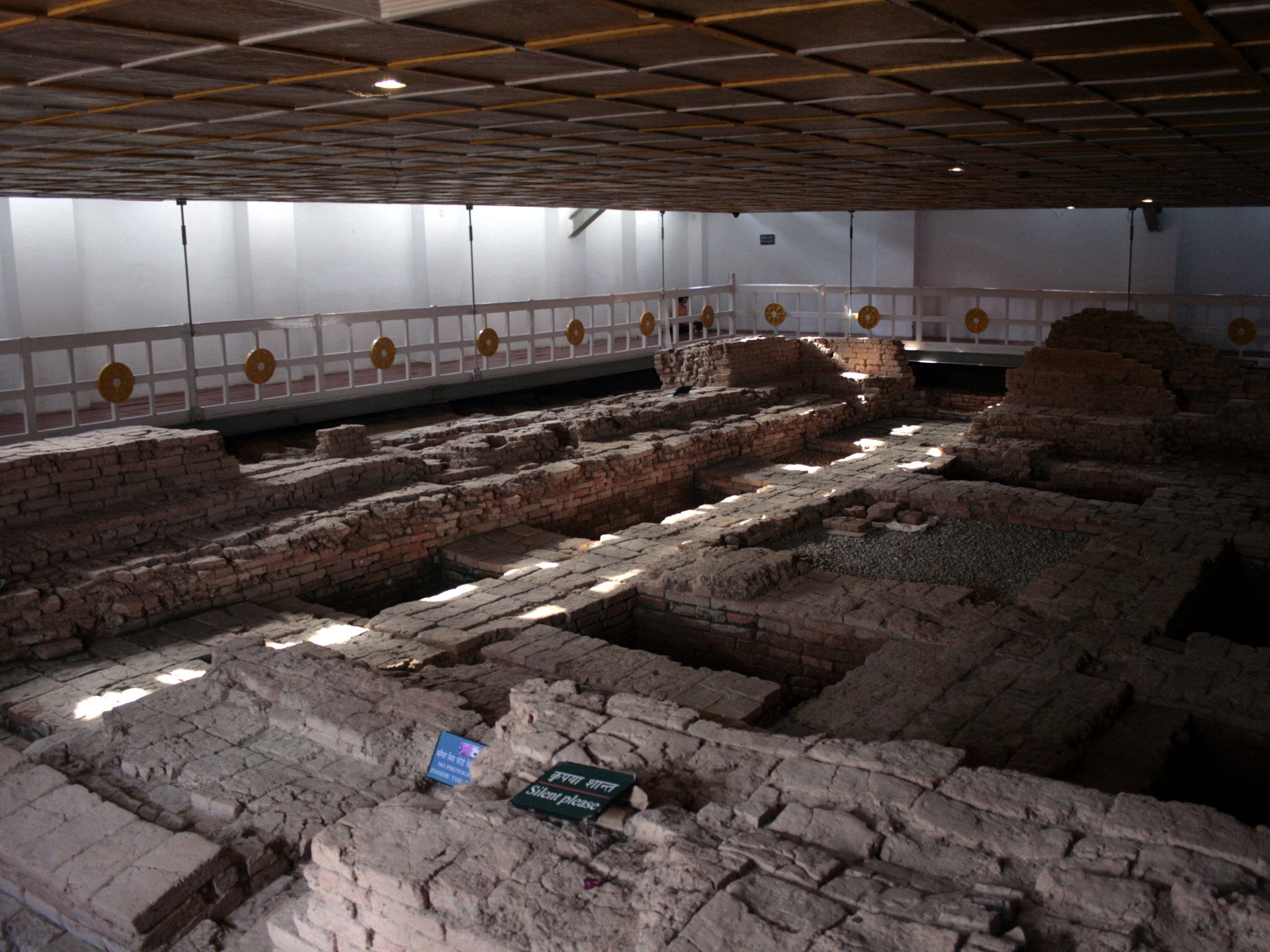Unearthed: the shrine set to revolutionise world view of Buddha's origins
Archaeologists digging beneath sacred Maya Devi Temple find first physical evidence to enable them to accurately date the nativity of Prince Siddhartha Gautama

Your support helps us to tell the story
From reproductive rights to climate change to Big Tech, The Independent is on the ground when the story is developing. Whether it's investigating the financials of Elon Musk's pro-Trump PAC or producing our latest documentary, 'The A Word', which shines a light on the American women fighting for reproductive rights, we know how important it is to parse out the facts from the messaging.
At such a critical moment in US history, we need reporters on the ground. Your donation allows us to keep sending journalists to speak to both sides of the story.
The Independent is trusted by Americans across the entire political spectrum. And unlike many other quality news outlets, we choose not to lock Americans out of our reporting and analysis with paywalls. We believe quality journalism should be available to everyone, paid for by those who can afford it.
Your support makes all the difference.The discovery of a 2,600-year-old simple wooden shrine surrounding the ancient tree in Nepal to which the Buddha's mother clung as she gave birth looks set to revolutionise the understanding of the origins of one of the world's major religions.
Archaeologists digging beneath the sacred Maya Devi Temple at Lumbini have uncovered the first physical evidence to enable them to accurately date the nativity of Prince Siddhartha Gautama whose teachings are now followed by half a billion believers.
The extraordinary find suggests that the very earliest devotees - some 600 years before Christ - were vegetarian and eschewed material wealth in favour of spirituality as laid down by the prince who abandoned his high rank to seek out the path to Enlightenment
A vast brick temple, which also predates the earliest known Buddhist structures, found at the same place suggests that the emerging religion enjoyed a wealthy and powerful benefactor before its adoption by the Emperor Asoka whose empire spread across most of the Indian sub-continent and who is traditionally considered the most important figure in its transformation from a local cult.
Professor Robin Coningham of Durham University, who co-led the international investigation with Kosh Prasad Acharya of the Pashupati Area Development Trust in Nepal, said until now Buddhist scholars had been forced to rely on oral and scriptural traditions which suggested the Buddha's birth date was either in the third or the sixth century BC.
"This find completely resets what we are dealing with in terms of early Buddhist practice," he said. Academic disagreement is the result of the differing histories held by the various Buddhist populations across Asia.
The failure to discover any physical evidence prior to a sandstone pillar laid by Asoka in 249BC marking the birth spot during his visit has long sown doubt in some scholars' minds over the chronology.
Professor Coningham said it is believed the wooden shrine - built by local villagers - encased the tree where the Buddha's mother Queen Maya Devi gave birth in a beautiful garden in the foothills of the Himalayas as she travelled from her husband's capital to her parent's home in Devadaha.
This was later overbuilt with a stone shrine measuring 26m by 20m constructed out of 20kg blocks which also had the tree at its carefully preserved centre. Fragments of charcoal and grains of sand were tested whilst the presence of ancient tree roots within the temple's void was detected by scientists at the University of Stirling in Scotland.
The failure to discover items of wealth or cut animal bones at the site suggests that the principles of non-meat eating and renunciation of material items as well as animal sacrifice were already established from the earliest moments of the religion.
"This was a time of huge economic and social transformation - the growth of states and cities and great population increase. The teachings of the Buddha said that you didn't need to be a Brahmin to be reborn and that there was more to life than materialism. This was attractive to the growing numbers of merchants who were not Brahmins," said Professor Coningham.
Lumbini, now a UNESCO World Heritage Site, is one of the four holy places of Buddhism alongside Bodh Gaya, where he achieved enlightened, Sarnath, where he first preached, and Kusinagara, where he died.
Today it is visited by one million pilgrims a year. UNESCO Director-General Irina Bokova, called for "more archaeological research, intensified conservation work and strengthened site management" to ensure Lumbini's protection. Academics believe the discovery could herald a new era in Buddhism scholarship.
Kumar Shrestha, Nepal's minister of culture, tourism and civil aviation said: "These discoveries are very important to better understand the birthplace of the Buddha. The government of Nepal will spare no effort to preserve this significant site."
The tree at the centre of the shrine was no longer there by 400AD however Chinese pilgrims did report the presence of another the following century suggesting it has been repeatedly planted over time. However it ceased to be a place of pilgrimage by the 15th century and was largely abandoned until it was discovered by the German archaeologist Alois Anton Fuhrer in 1896 amid the jungle.
Join our commenting forum
Join thought-provoking conversations, follow other Independent readers and see their replies
Comments